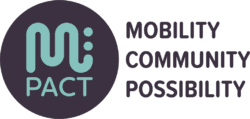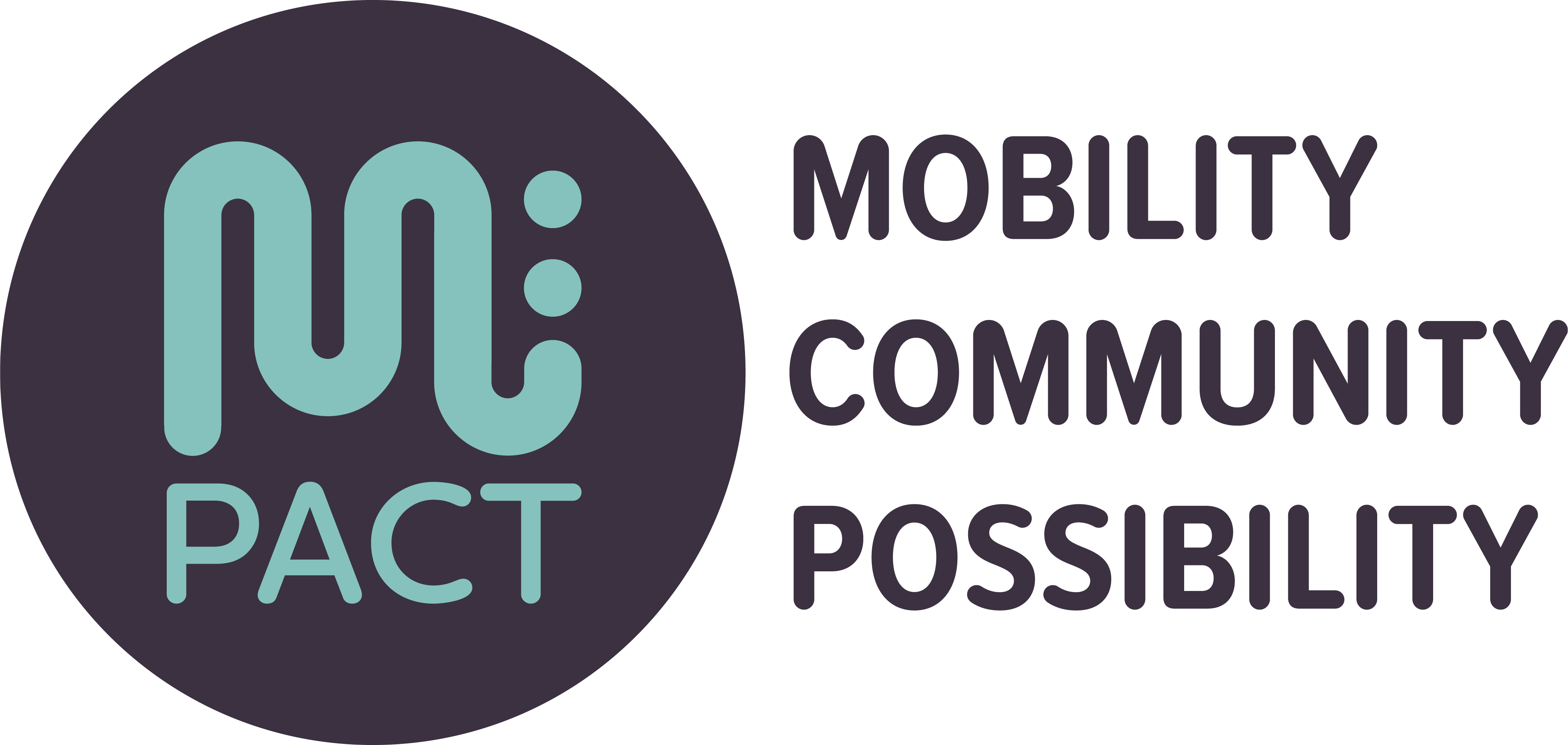Now is an excellent time to speak up for transit and transit-oriented communities.
Why speak up?
As practitioners, leaders and advocates in this space, we have an opportunity to highlight the benefits and educate leaders at all levels. We can celebrate the successes of communities that have voted to expand transit funding and study their funding packages and messaging. We can speak up in areas where transit funding is at risk, emphasizing the economic advantages of transit for everyone, from those who rely on it to those who rarely or never ride. We also can push at the federal level for multimodal transportation investments and supportive land use and development.
Whether we work in the public or private sector, it’s crucial that we reach out to our local and federal elected officials to make sure they hear the stories of mixed-use, multi-faceted communities built around transit in a variety of settings. They need to hear how investments in density around transit stops and stations yield multiple benefits, from better air quality and overall sustainability to efficient use of public resources and greater access to jobs and opportunity. They need to know that these benefits last beyond just a few years: they are multi-generational and improve the livelihoods of individuals, families, businesses and whole communities.
Why now?
Since the Covid pandemic, travel patterns have shifted significantly. The morning and afternoon commuter is no longer the sole focus of service or source of ridership. Transit riders these days want accessibility through out the day and weekend, to reach a variety of destinations in centers beyond downtown. In response, transit systems are evolving, in the variety of services offered and the connections available to other modes of transportation. These mobility systems are adapting and incorporating cutting edge technology to more efficiently meet current and future needs.
Read on for a sampling of just some of the benefits and yields of investing in transit and transit-oriented communities. What are the stories of return-on-investment in your community?
Investing in transit expansion yields widespread economic benefits beyond transit users themselves
- Every $1 invested in public transportation generates approximately $5 in economic returns. (American Public Transportation Association)
- In Utah, every $1 invested in the Utah Transit Authority (UTA) generates $5.11 in economic returns. UTA services connect riders to jobs, errands, and experiences and generate new jobs, wages, spending, and tax revenue. Whether or not they ride UTA, all Utahns benefit. (Utah Transit Authority). This includes
-
- $9.6 billion each year in goods and services enabled by time and mileage savings
- $595 million in household income because of household and business travel savings combined.
-
- In Toronto, Ontario, during morning peak, the capacity of the southbound Line 1 subway into downtown is the equivalent of approximately 26 lanes of highway. (University of Toronto Mobility Network)
- In Minnesota, a 2019 report from East Metro Strong and the Minneapolis Regional Chamber examined the costs and impacts of expanding the regional transit system in Minneapolis/St Paul, including focus on travel time savings, vehicle operating expense savings, reliability improvements, emissions reductions, safety benefits and pavement maintenance savings. The report found that
-
- 81% ($7.327 billion) of the benefits are enjoyed by people and businesses using the region’s street and highway system.
- 19% ($1.730 billion) of the benefits are enjoyed by people using the transit system.
-
Transit scores high on ROI compared to other infrastructure investments
The most comprehensive evaluation of the economic impact of public infrastructure investment—encompassing energy, transportation, school buildings, and water—was conducted by Heintz, Pollin, and Garrett-Peltier. Their findings, as cited by East Metro Strong, are as follows:
- For every $1 billion invested in infrastructure, the direct and indirect employment effects range from 9,932 to 17,784 jobs per billion dollars, with public transit creating the highest number of jobs.
- Within the category of transportation infrastructure, public transit and the repair of roads and bridges generate the largest number of jobs. Specifically, transit generates 5,377 jobs, which is 31 percent more than the number of jobs created by new construction of roads and bridges for every $1 billion spent.
Transit and transit-oriented development deliver economic and quality of life benefits
- In Utah, because transit reduces congestion and other costs for cars and trucks, Utah firms could employ 10,000 more employees (Utah Transit Authority’s (UTA) Transportation Efficiency Analysis Report – Key Findings)
- Transit-oriented neighborhoods create infrastructure efficiencies. (Adie Tomer, Brookings Metro, 2022 presentation at Rail~Volution Miami)
-
- 4x cheaper to connect broadband networks
- 74% reduction in stormwater runoff
-
- Transit reduces vehicle operating costs for households, the economic costs of traffic collisions and health care costs related to respiratory illness. (Canadian Urban Transit Association)
- Transit-Oriented Development reduces motor vehicle use and the resulting air and noise pollution. (Institute for Transportation and Development Policy)
- In Minnesota, Transit Oriented Development (TOD) on high-frequency transit routes generated an average of $60,000 per acre in property tax revenue – 10 times the regional average of $5,700. This additional revenue for cities and counties reduces the share of overall taxes paid by other properties and ensures financially sustainable services for all residents in the region. (Metropolitan Council, Minnesota)
- The higher the proportion of fixed-guideway transit (including Bus Rapid Transit ) in a regional network, the higher the GDP and job growth. (University of Minnesota Center for Transportation Studies)
- In Northwest Indiana, regional investment in upgrading regional rail – the South Shore Double Track Project and West Lake Corridor project – will be a catalyst for economic development. These “transit development districts” are projected to result in the following benefits, according to the Northwest Indiana Regional Development Authority Transit Development Districts:
-
- $2.3 billion in private investment
- 6,000 new jobs
- $3+ billion in economic impact by 2040.
-
Housing and transit together are a winning combination
- In Grand Rapids, MI, one man’s decision to rely on transit enabled him to save up enough money to buy his first home. Shifting from car ownership to transit saves between $8,000 and $13,000 per year. “For someone saving at the high end of this range, a 20% downpayment on a median-priced home in the U.S. ($83,840) could be within reach in just six years – about the time it takes to pay off a car loan.” For this strategy to work for more people, cities and regions need more frequent and reliable transit. (Realtor.com)
- New affordable housing in Los Angeles, at Los Lirios apartments, demonstrates the ways that transit agencies are partnering to provide housing and transportation access to families at all income levels. Located on Metro’s E Line and near bus routes, the development is part of LA Metro’s goal of building 10,000 homes by 2031.
- In Ontario, Canada, development near transit stations will add more than 40,000 homes as well as park land, commercial, retail and community spaces. These transit-oriented communities will reduce gridlock, create economic opportunities and support 19,000 new jobs in the region. (Government of Ontario, Canada)
Transit-oriented development transforms underutilized spaces
- In Kansas City, the ArriveKC transit-oriented development will turn an abandoned hospital complex into 385 new market rate apartments located a few blocks from the KC Streetcar and RideKC bus stop. The new development will increase tax revenue on this land from $75,000 to $469,000.
- In Bellevue, WA, the Spring District is transforming land formerly used for warehousing into a neighborhood combining places to live and work, with supporting retail, including 6 office buildings, three housing complexes and a Global Innovation Exchange educational facility – all near the Sound Transit Spring District Station. Affordable housing is coming to the same district through the collaboration of multiple public and private partners, including Sound Transit, the City of Bellevue and Amazon’s Housing Equity Fund.
Technology is making mobility more efficient
- A four-month test of an AI maintenance tool for buses performed across three transit agencies in the US and Canada found that the tool cut labor hours by as much as 50%. That means maintenance staff can better find, repair, and prioritize the issues that they identify. (Metro Magazine)
- Cities of varying size are using data and technology to manage not only parking but access to curbs by different kinds of vehicles, enhancing access and safety. (GovTech)
- Urban planners and designers are harnessing virtual reality to learn how transit riders understand and navigate transit stations before actual engineering, design and operational planning begins. This relatively low-cost investment helps validate decisions before costlier investments are made. (Mpact Podcast – The Cognitive Experience of a Transit User – transcript at 23:02)
- Multiple start-up companies are envisioning ways that use of AI can improve transit service and workforce planning as well as the overall passenger experience. (Smart Cities World)
- The number of full-size zero-emission transit buses grew 14% in 2024, to a total of 7,026 vehicles funded, ordered, delivered or on the road. This is a leap forward from the 2,000 in 2019. (Smart Cities Dive) Every bus converted from conventional “clean” diesel to an electric bus results in a 100% reduction of harmful emissions and an estimated fuel/energy cost savings of 77%. (University of Toronto Mobility Network, p. iii)
Transit is part of an innovative, forward-looking connected mobility system
- 70% of scooter and bikeshare riders report that they use shared micromobility to connect to transit; 20% say they use it weekly to connect to transit. (North American Bikeshare and Scootershare Association -NABSA)
- In Virginia, the Pulse Bus Rapid Transit (BRT) line provides a central spine of frequent reliable, high-quality transit service that connects to a redesigned bus network and improved sidewalks. This comprehensive approach helps ensure “residents can access the bus stops that can take them to the 140,000 jobs accessible with 45 minutes on transit from downtown Richmond.” (Greater Washington Partnership presentation, p 21) The Pulse has exceeded ridership expectations since it opened in 2018. (Virginia Mercury)
- In Arizona, a car-free development along light rail, Culdesac Tempe, includes 288 apartment units and comes with e-bikes, transit passes and car-share. Building design mitigates heat and promotes wind flow and cross-ventilation as well as social interaction. The architect said, “not needing to accommodate spaces for car storage or circulation … opened up the opportunity to focus on people-oriented spaces.” (Dwell)
Speaking up for transit and transit-oriented communities, using the examples above and stories from your community, can help build support not only for keeping transit but also making it better, in locations across the country, urban and rural. There 1,281 rural and 929 urban transit systems in the US. (American Public Transportation Association)


